Step By Step Vegetable Stew
This is a favorite on cool winter nights (and any other time)!These are pictures from our last batch. A stew is a common dish made of vegetables (particularly potatoes or beans), meat, poultry, or seafood cooked in some sort of broth or sauce. The lines between stew, soup, and casserole are fine ones.
Generally, a stew's ingredients are cut in larger pieces than a soup's and retain some of their individual flavours; a stew may have thicker broth than a soup, and more liquid than a casserole; a stew is more likely to be eaten as a main course than as a starter, unlike soup; and a stew can be cooked on either the stove top or in the oven, while casseroles are almost always cooked in the oven, and soups are almost always cooked on the stovetop. There are exceptions; for example, an oyster stew is thin bodied, more like a soup.
Did You Know? - Stewing has a long tradition in cookery. Popular recipes for regional stews, such as gumbo, bouillabaise, Brunswick stew, and burgoo became common during the 19th century and increased in popularity during the 20th.
Written records of stews go back as far as written cookbooks. There are recipes for lamb stews & fish stews in the Roman cookery book Apicius, which probably dates from the 4th century. Taillevent (French chef, 1310-1395 whose real name was Guillaume Tirel) wrote Le Viandier, one of the oldest cookbooks in French; this also has ragouts or stews of various types in it.
To go back even further, there is ample evidence from primitive tribes who survived into the 19th and 20th centuries, that they could and did boil foods together (which is what a stew essentially is). Amazonian tribes used the shells of turtles, boiling the entrails of the turtle and various other ingredients. Other cultures used the shells of large mollusks (clams etc.) to boil foods. There is archaeological evidence of these practices going back 7,000 or 8,000 years or more.

Always use fresh ingredients; these came from our little garden. Onions and potatoes keep for a long time if left in a dark bag.
Onions
Did You Know? - It is thought that bulbs from the onion family have been used as a food source for millennia. In Caananite Bronze Age settlements, traces of onion remains were found alongside fig and date stones dating back to 5000 BC. However, it is not clear if these were cultivated onions. Archaeological and literary evidence suggests cultivation probably took place around two thousand years later in ancient Egypt, at the same time that leeks and garlic were cultivated. Workers who built the Egyptian pyramids may have been fed radishes and onions
Potato
Did You Know? - The potato (Solanum tuberosum) is a perennial plant of the Solanaceae, or nightshade, family, commonly grown for its starchy tuber. Potatoes are the world's most widely grown tuber crop, and the fourth largest food crop in terms of fresh produce — after rice, wheat, and maize ('corn'). The potato was domesticated in southern Peru[1] and is important to the culture of the Andes, where farmers grow many different varieties that have a remarkable diversity of colors and shapes. In pre-Colombian times they were also widely cultivated on Chiloe island, in Chile. Potatoes spread from South America to Spain and from there to the rest of the world after European colonization in the late 1400s and early 1500s and have since become an important field crop.
 <
<
Always use fresh ingredients; these came from our little garden. The carrots and celery need to be scrubbed and we take the "veins" off the celery.
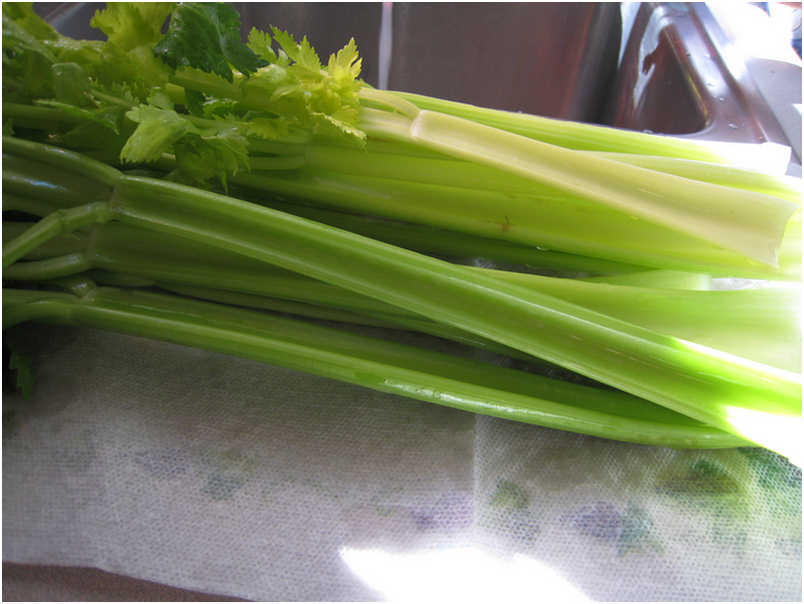
The celery was a beautiful color which makes the final results even better looking!
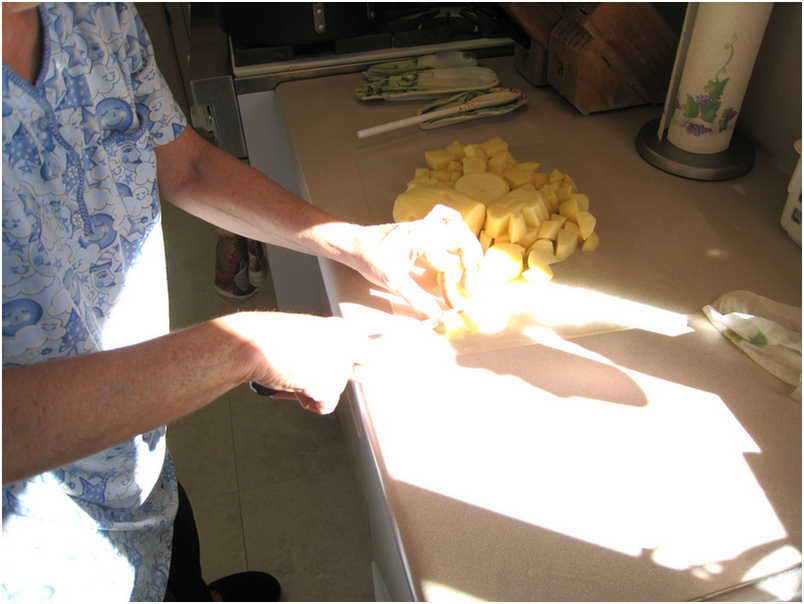
Chop the ingredients into bite-size pieces.
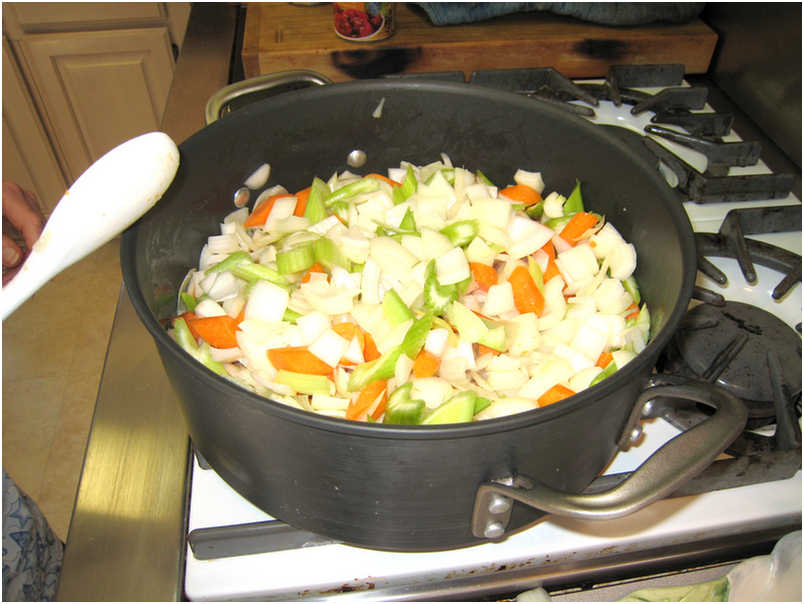
Sautee the ingredients bringing them up to temperature and softening the vegetables.
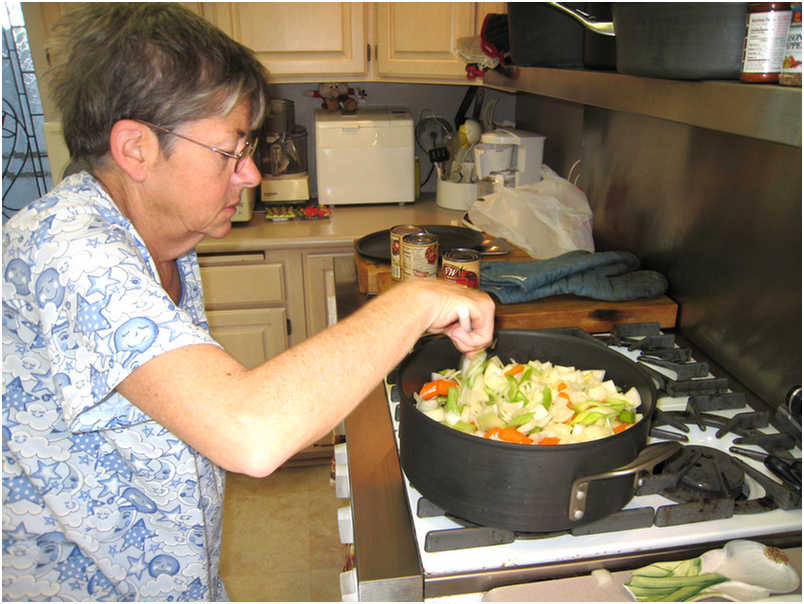
Stir the pot to keep the heat equally distributed.
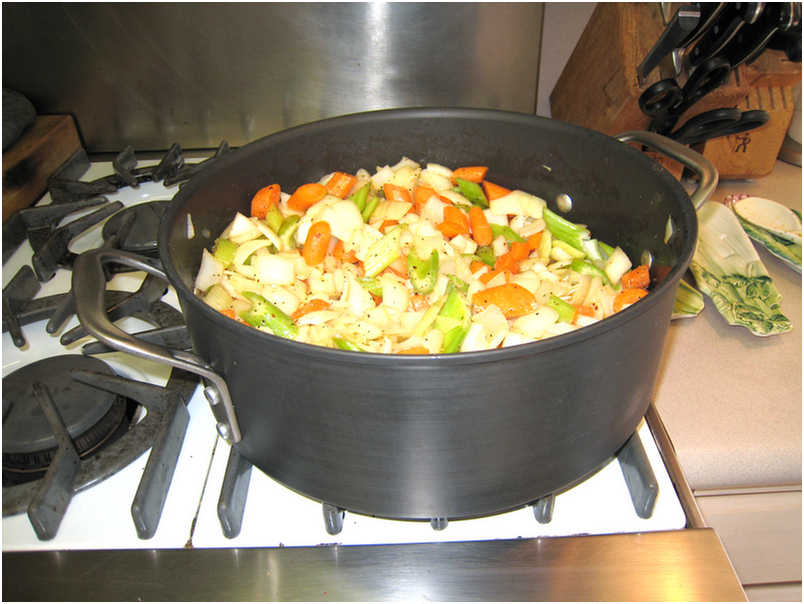
Keep the heat on until the contents are "soft".
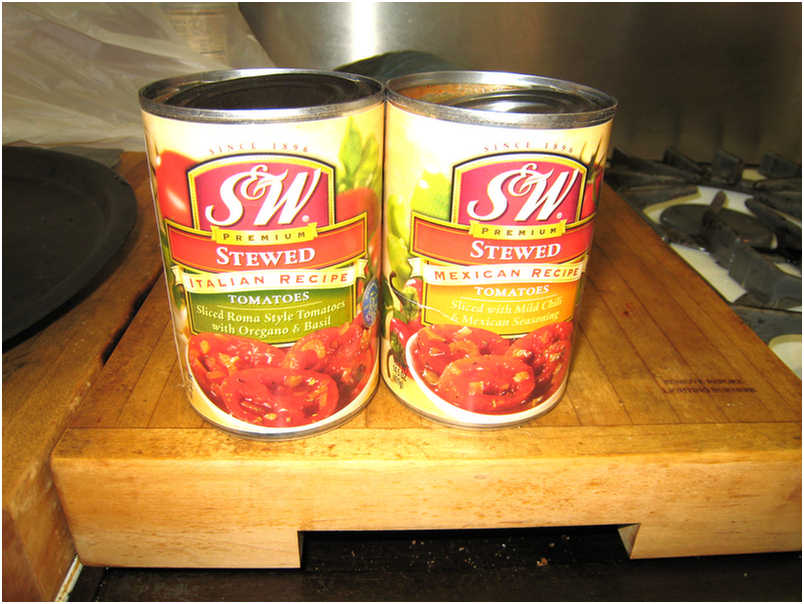
If you do not have fresh tomatoes, canned will have to do!
Did You Know? - S&W was founded in 1896 by three grocery wholesalers from San Francisco -- Samuel Sussman, Gustav Wormser and Samuel Wormser, surrounded by a city that was just beginning, and near Northern California's luscious valleys and fertile orchards.
S&W has grown from a simple idea to become a name known worldwide for quality and taste. From fruits and vegetables to dressings and sauces, S&W has been a part of great meals for generations, bringing healthy and nutritious food to millions of homes.
They used the finest vegetables, beans, and fruits and created the era of premium-canned foods- giving their customers and their families healthy, nutritious, and convenient food year round.
In March 2001, Del Monte acquired S&W, bringing together two leaders of quality canned food.
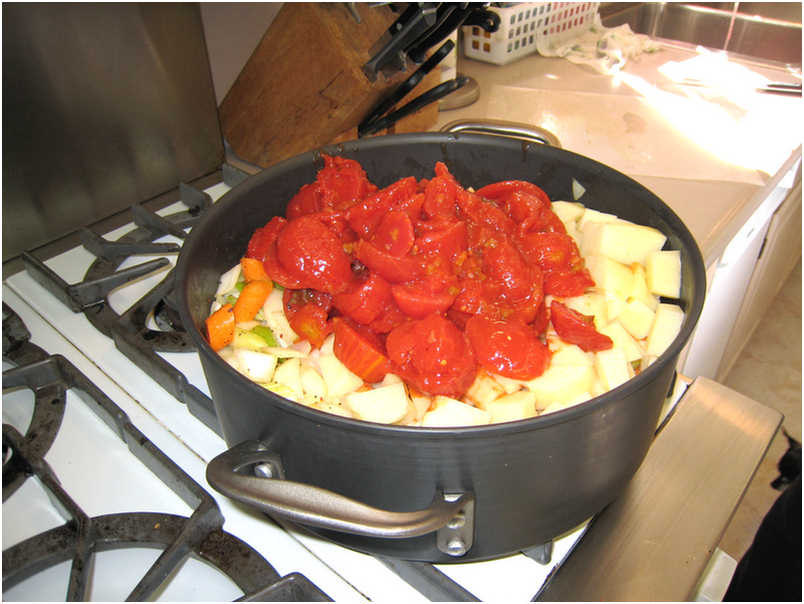
Add it all together and heat... Mix it well!
Did You Know? - The tomato (Solanum lycopersicum, formerly Lycopersicon esculentum) is a plant in the Solanaceae or nightshade family, native to Central, South, and southern North America from Mexico to Peru. It is a short-lived perennial plant, grown as an annual plant, typically growing to 1–3 m in height, with a weak, woody stem that usually scrambles over other plants. The genus Solanum also contains the eggplant and the potato, as well as many poisonous species. The leaves are 10–25 cm long, pinnate, with 5–9 leaflets, each leaflet up to 8 cm long, with a serrated margin; both the stem and leaves are densely glandular-hairy.
The flowers are 1–2 cm across, yellow, with five pointed lobes on the corolla; they are borne in a cyme of 3–12 together. The word tomato derives from a word in the Nahuatl language, tomatl. The specific name, lycopersicum, means "wolf-peach" (compare the related species S. lycocarpum, whose scientific name means "wolf-fruit", common name "wolf-apple").
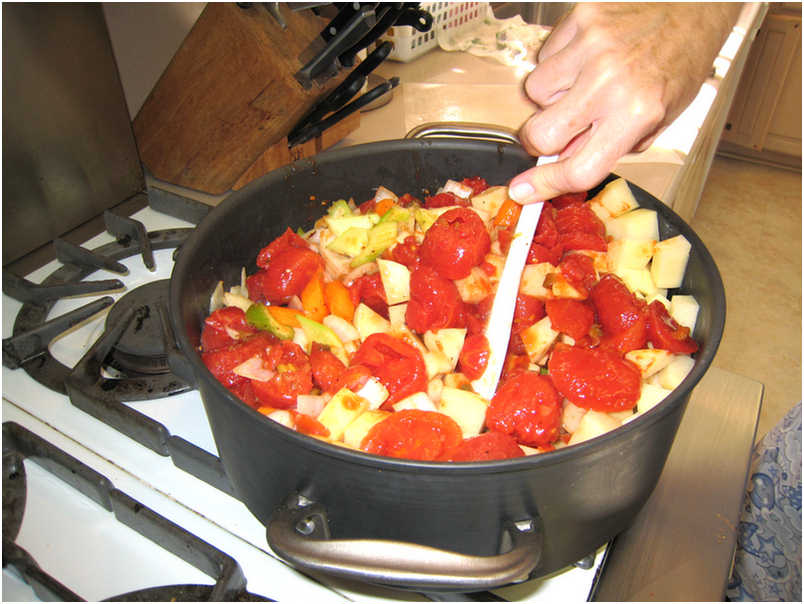
Stir stir stir!
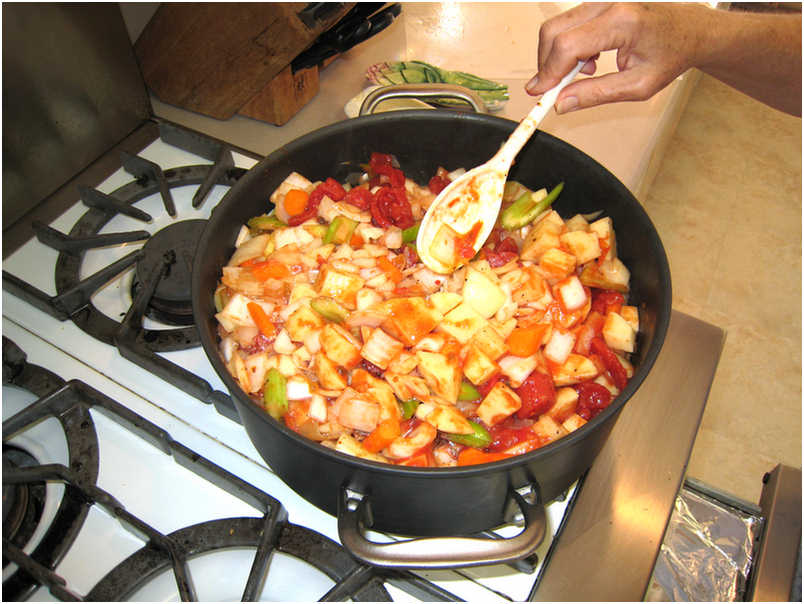
Simmer for a good hour and let it cool down... serve!